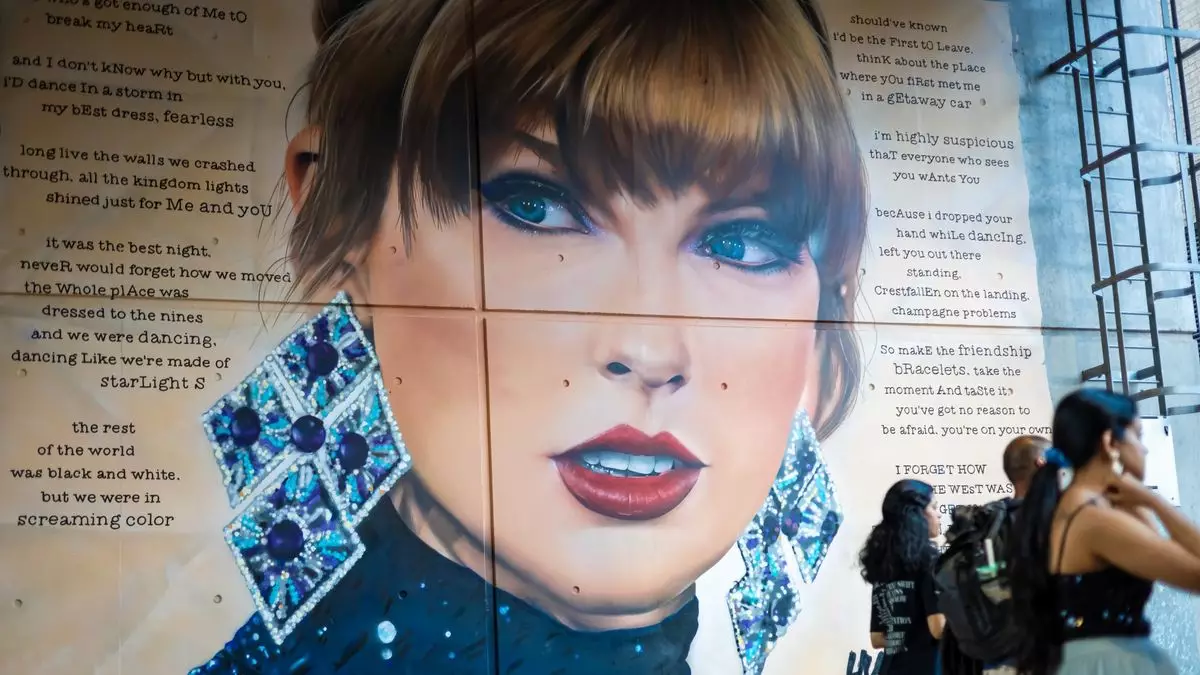As the world continues to recover from the pandemic’s aftermath, few cultural phenomena have surfaced to indicate a return to normalcy like Taylor Swift’s Eras Tour. More than just a musical event, this tour is demonstrating the extraordinary power that modern entertainment can wield over the economy. According to data gathered by global real estate firm JLL, the Eras Tour has generated approximately $1 billion in additional hotel revenue across multiple continents, establishing itself alongside iconic events like the Super Bowl and the Olympic Games. This unprecedented financial influx speaks volumes about the burgeoning intersection of music, tourism, and hospitality.
The scale of Taylor Swift’s impact is staggering. Zach Demuth, the global head of research for JLL’s hotels division, has pointed out that certain cities witnessing her concerts are experiencing revenues typically reserved for major sporting events or international tournaments. For instance, during her concerts in Las Vegas, hotel occupancy soared to an impressive 90%, with rates hovering between $400 and $500 per night. Comparably, the Super Bowl achieved about 80% occupancy, with higher rates around the $600 mark, but over an extended period. This highlights not only the draw of the Eras Tour but also its concentrated economic impact in a shorter time span.
The Eras Tour’s financial benefits extend beyond just hotel room nights. When Swift’s concerts descended upon Paris, the results were similarly remarkable. The individual nights of her performances surpassed the revenue of peak nights during the Olympics, signaling a new era where pop culture figures can rival the most traditional pillars of tourism and revenue generation.
As the tour made its way back to the U.S. and hit Miami in October, the effects were immediate and pronounced. The JW Marriott Miami Turnberry Resort & Spa reported nearly $1 million in room revenue over three days, a reflection of average rates soaring by $250 compared to the same weekend in the previous year. Additionally, occupancy rates surged by 30%, fueling local businesses and providing a much-needed boost to Miami’s tourism sector.
Shane Allor, the hotel’s general manager, illustrated how meticulously the establishment planned for Swift’s arrival. By integrating themed programming, including initiatives to create a “full Eras Tour experience,” they effectively captured the attention of both local and visiting fans. Hotel strategy mirrored that of major sports events, emphasizing that Swift’s concerts could yield just as much economic benefit as longstanding sporting traditions.
Beyond the immediate revenues seen by hotels, the Eras Tour has spurred new travel trends marked by increased investment opportunities in creative experiences. The Brightline train service took advantage of the Miami concert dates by introducing a “Swift Sing-Along Train.” This train service featured friendship bracelet-making stations and themed beverages, showcasing a shift in how travel companies are adapting to capitalize on popular culture events.
Fans are not just attending concerts; they are engaging in entire experiences built around the artist. Tour guides and travel agencies are seeing increased business featuring Swift-related excursions, indicating a collaborative economy blossoming from fan enthusiasm.
Moreover, JLL’s Demuth pointed out significant shifts in travel patterns, noting that the majority of concert-goers in Europe were Americans—often finding cheaper ticket and travel combinations than those available domestically. This scenario illustrates the remarkable buying power still held by American consumers, even when traveling internationally, creating new demand dynamics for hotels and travel services abroad.
The sweeping influence of Taylor Swift extends beyond hospitality into the broader economic landscape. Hyatt’s CEO, Mark Hoplamazian, expressly linked high occupancy and performance in Europe with the “Taylor Swift effect,” suggesting that even industries beyond hotels are poised to benefit.
Travel agents and advisors are witnessing the financial motivation of fans who are willing to spend significant sums for multi-city trips dedicated to seeing Swift perform. As noted by Tim Davis of LoveLand & Sea Travel, it is not uncommon for clients to invest in trips worth over $20,000 each, underlining how the tour’s influence prompts serious travel decisions.
It is clear that Taylor Swift’s Eras Tour stands as a pivotal case study in the modern economy, showcasing how entertainment can drive significant revenue generation, shape travel behaviors, and ignite local economies. This phenomenon elucidates the potential for artists to not just influence culture but to act as substantial economic catalysts—reminding us of the intricate relationship between music, experience, and opportunity.

